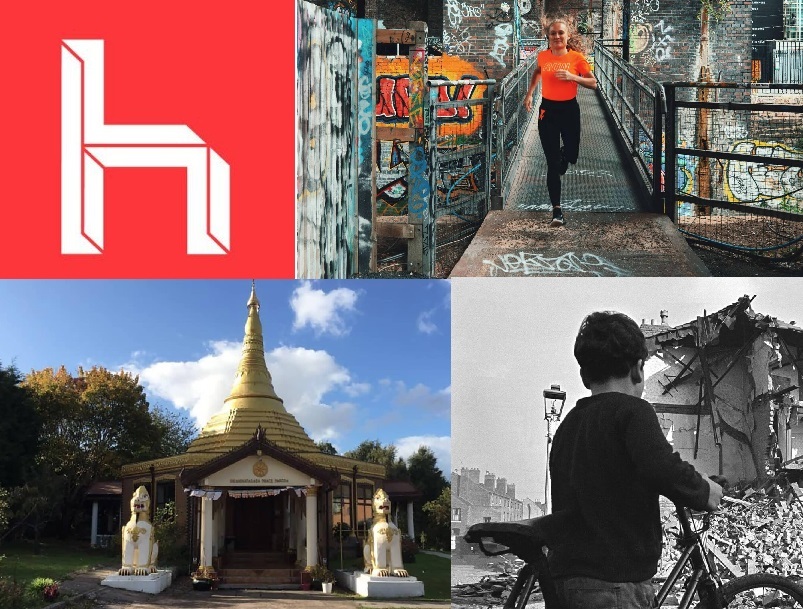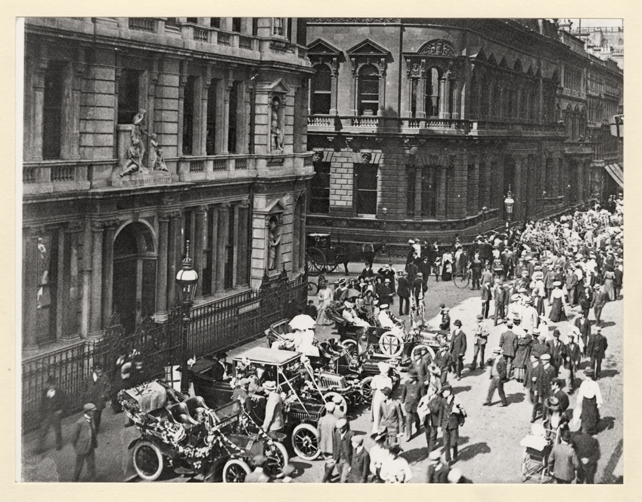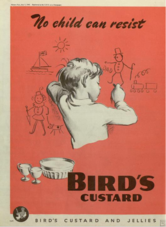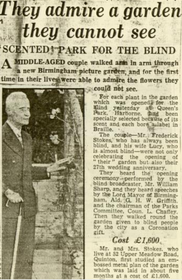|
September 2020
The production of the update is a collaboration between the Archives, Community Libraries, the Library of Birmingham, Library Services at Home, the Mobile Library, and the Prison Library! Our aim is to share Birmingham’s history, archives, and community heritage activities, showcasing our city’s unique and irreplaceable archival collections, keeping you updated about projects and events you can get involved with! In every issue there will be a range of articles and fun quiz activities to involve you with our unique and irreplaceable collections!
 Eleven days of varied and fascinating events start TODAY here in Birmingham, including displays, walks and talks to open days. This year Birmingham Heritage Week (BHW) invites you, for the first time, to explore Birmingham’s heritage through virtual events as well as in person visits. You can test your Birmingham knowledge with the Brummie Quiz and take the post box challenge; what do you know about your local post box? Events are filling up quickly this year - so be quick and book as soon as you can! If you can't get onto/into an event - many are available virtually and can be viewed any time during BHW!
Why not combine a bit of heritage with a bit of fitness too... with a 'Best of Birmingham Running Tour' or a 'Cycling tour of late 60s Birmingham'?!
Alternatively, enjoy one of Moseley’s hidden treasures, an oasis of calm and haven for wildlife. Bring a picnic and be ready to explore and identify the trees, plants and creatures you will find at Moseley Park & Pool, or visit the Birmingham Buddhist Vihara and learn about Buddhism!
We hope you enjoy discovering Birmingham’s history and heritage, in person or from the comfort of your home. Find out all about the week and its events here!
Can you solve the anagrams below? We've given you some letters to get you started (answers below). FYI one of our lovely Library of Birmingham Archives assistants puts these puzzles together... he does make them difficult!
 A clue for the 4th anagram here... Motor cars taking up their assigned positions in 'Rec Owl Room', Birmingham, before the start of the procession through the city and district to mark the 70th birthday of Joseph Chamberlain [WK/B11/20].
1. Resonant Cent C_ _ N_ N S_ _ _ _ T
2. But Ell Rest _ _ LL _ _ RE_ _
3. Interceptors Rota C_ _ P_ _ _ T_ _ N _ _ _ EE_
4. Rec Owl Room C_ _ _ OR_ _ _ W
5. Etchers Retry _ _ E_ _ Y _ _ _ EE_
6. Lad Need _ _ LE E_ D
7. Mended Truest ED_ _ _ D _ _ _ E_ T
8. Careens Better B_ _ AC_ _ _ _ _ _ ET
9. A Brow A_ R_ _
10. Dendrite DE_ _ _ E_ _
11. Sudden Dot DU_ _ E_ _ ON
12. Trisected Elk In _ _ KN_ _ LD S_ _ _ _ T
 Librarian and motor van belonging to the Book Exchange Service, Birmingham Public Libraries [WK/B11/1003], 1929.
The Mobile Library is back on the road bringing books to you!
To make sure that customers and staff remain safe, we will be offering an Order & Collect service only. Please see our new temporary timetable.
What is Order and Collect?
The Order and Collect service enables you to request library books online, by email or by telephone. You can choose up to 6 books or talking books and they will be available for collection at your chosen Mobile Library stop.
How do I arrange Order and Collect from the Mobile Library?
What else do I need to know?
- We can only bring pre-ordered selections for now and regret that staff can’t check the shelves for items while you wait during this phase of reopening.
- Items will be collected and returned at the entrance of the mobile library. You won’t be able to enter the vehicle to browse or choose for yourself.
- All books are bagged ready for collection and safely stored once packed. They will have already been issued to your library card to reduce contact.
- Once your order is ready you will be notified, and you can collect your books from your chosen Mobile Library stop.
- Remember to check the Mobile Library timetable on our website (we will be operating a limited stop timetable, Monday to Friday only).
 |
|
Serving Birmingham since 1984 - we look forward to seeing you again! |

This month's jigsaw puzzle features the Bird's Custard 'No child can resist’, advert from July 1945 and you can find out more about it on our Connecting Histories website here.
This advertisement shows how advertisers used images of children to catch the viewer’s eye, and demonstrates how, as families became more affluent, they also targeted children as consumers! Historical adverts for Birmingham’s ‘Bird’s Custard’ represent children in very gendered and class-based roles and reflect society’s values in the 1940s.
You can find out more about some of the adverts in our collections here! And you must... of course... try your hand (or mouse) at the jigsaw?!
|

Handsworth Historical Society was formed in 1952 and since 1978 has occupied half of the building known as ‘Handsworth Old Town Hall’ (pictured). This is a Grade 2 listed cruck cottage built about 1460 and the Society runs their half of it as a community museum about Handsworth!
Whilst they're not yet able to open, the museum contains many exhibits/displays and a host of accessible local records. When open to the public they also try to help with family history and other enquiries about the area’s past, and hope to welcome visitors/groups at other times by appointment again in 2021. In the meantime, you can find out more about the society here, and you can get in contact by email secretary@handsworth-historical-society.org, in writing to 20 Slack Lane, Birmingham, B20 2JL, or by phone on 0121 554 6762.
|

Our September document of the month is an article from the Birmingham Gazette and it records the initial reactions of some of the first users of a garden for blind and visually impaired people that opened at Queen’s Park, Harborne on 31 July 1953. The Parks Committee minutes contain a description of the proposed garden, which was intended to ‘supplement the pleasure and enjoyment which sighted persons derive’ from the city’s parks. The grass terrace to Court Oak House at Queen’s Park was chosen because it was easily accessible to people living or working at the college for blind and visually impaired children and adults on Court Oak Road, used by a quarter of Birmingham’s blind population. The college had been established as a school by the Birmingham Institution for the Blind in 1904. In 1918 it took over the supervision of blind home workers in Staffordshire, Warwickshire and Worcestershire. Students were being given a technical education there by the 1930s, and in 1958 the technical department was extended and renamed the Queen Alexandra Technical College for the Blind. The minutes describe features of the garden that stimulated senses other than the visual. These included raised banks so that people could enjoy the scents of flowers, plants and aromatic shrubs without stooping; a raised pool with a fountain so that people could hear the splashing water; nesting boxes to encourage birds; paths with different textures to give guidance to users; plant labels in Braille, and a metal embossed plan showing the layout of the garden to allow new users to become familiar with it. Some of these ideas were apparently taken from an article in Vision–The Popular Magazine about the Eyes, which was read by members of the Parks Committee and described similar gardens in a park in Exeter established in 1939, and more recently at a park in Morecambe.
The efforts made by the Parks Committee to provide innovative facilities in the parks for different sections of Birmingham’s population suggest a more flexible attitude towards public spaces after the Second World War, and the newspaper article indicates that the garden was popular with its intended users. However, the radio producer Charles Parker carried out a series of interviews with people living and working at the technical college in Harborne in the mid 1960s as part of his research for a programme about the provision of education and care for blind and visually impaired people in Britain. Although many of the interviewees spoke vividly about their experience of visual impairment and their heightened awareness of smells, sounds and textures, interestingly, none of the children or adults referred to using the garden at Queen’s Park.
References: BCC Parks Committee Minutes, 27 July 1953 [BA&H: BCC 1 BO/1/1/30]; Birmingham Charity for the Blind and Visually Impaired website, http://www.brib.org.uk/events.htm accessed July 2010; BCC Parks Committee Minutes, 5 January 1953 [BA&H: BCC 1 BO/1/1/29]; this can also be seen in plans for adventure playgrounds in Birmingham’s parks in the 1950s, and in the development of the Midlands Arts Centre in Cannon Hill Park from 1960; Actuality recordings for 'The Blind Set' [BA&H: MS 4000/6/1/54].
|

1. Cannon Street, 2. Bull Street, 3. Corporation Street, 4. Colmore Row, 5. Cherry Street, 6. Dale End, 7. Edmund Street, 8. Benacre Street, 9. AB Row, 10. Deritend, 11. Duddeston, 12. Icknield Street.
Hope you got them all?!
This photo is a platinotype print featuring two of the "anagram-ed" streets is from the Warwickshire Photographic Survey archive! It shows the corner of Cherry Street and Cannon Street in Birmingham in the 1870s-1880s, and was photographed by the Archaeological Section of the Midland Institute. Ref: WK/B11/1262. You can access hundreds of fantastic photos from this collection here!
|
We hope you’ve enjoyed this 4th edition of our update… if you have, you can forward this newsletter to your friends and family! We’ll be back next month! And... why not let us know what you’d like to see features on? And we’ll see what we can do! Email us at archives.heritage@birmingham.gov.uk!
Explore the
Archives catalogue here
|
Find out more about the Archives here
|
Explore the Library catalogue here
|
If you no longer wish to receive this newsletter please use the 'unsubscribe' here.
|